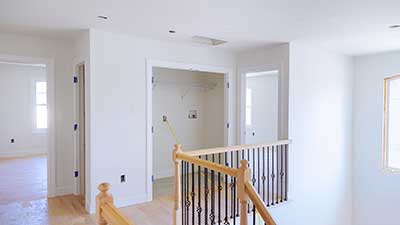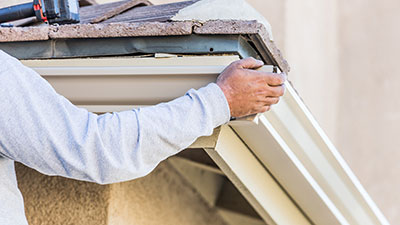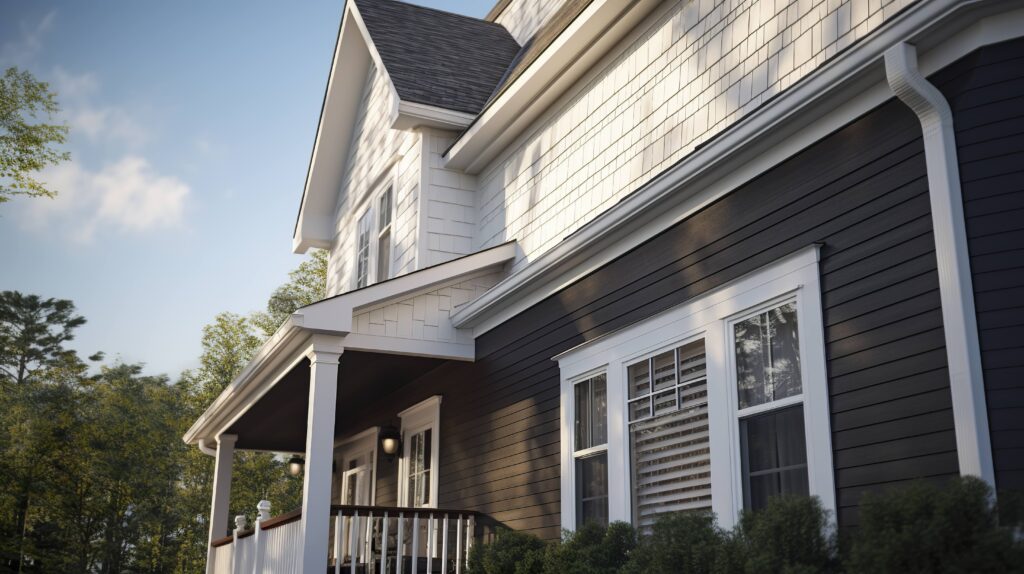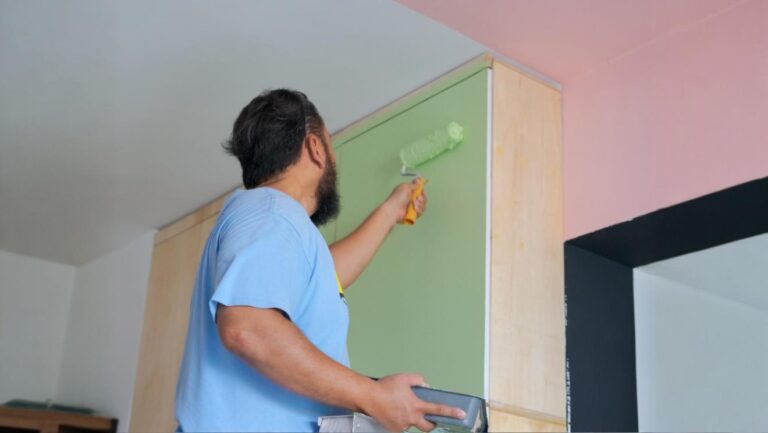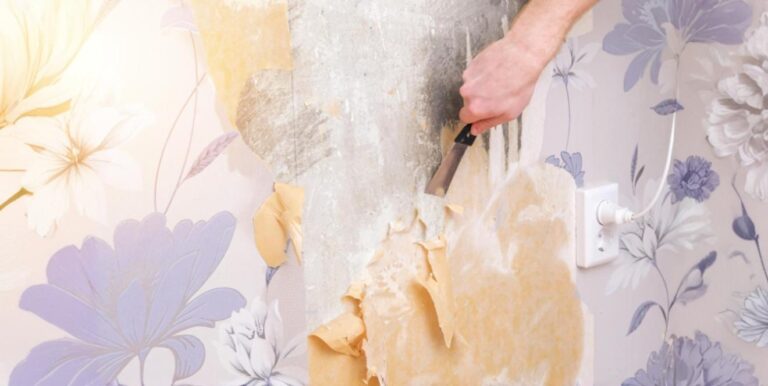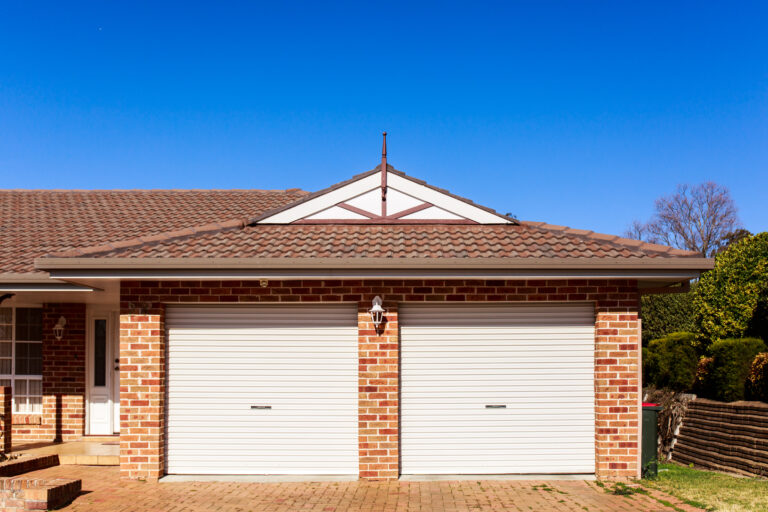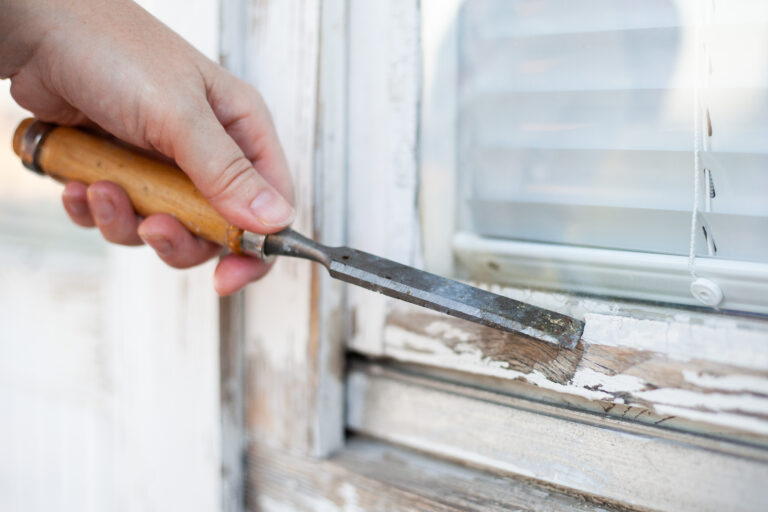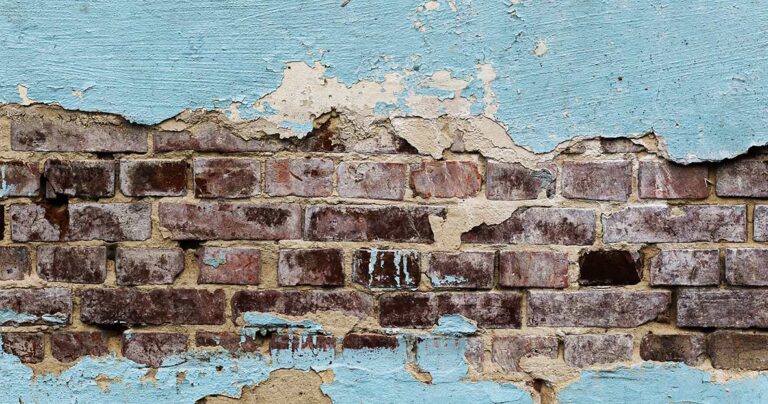If you’ve been wondering, can you paint vinyl siding, you’re not alone. Many homeowners find themselves staring at their aging, faded siding and asking the same question. The good news is that painting vinyl siding isn’t just possible—it’s a cost-effective way to breathe new life into your home’s vinyl siding. With the right tools, vinyl siding paint, and a bit of elbow grease, you can achieve a fresh look that rivals new vinyl siding without breaking the bank.
But before you start imagining your home’s new color, it’s important to understand the process involved. Painting vinyl siding requires more than just a brush and a can of paint. It involves careful preparation, the right tools, and high-quality vinyl-safe paint to ensure the best results. So, let’s get started and transform your vision into reality.
Key Takeaways
- Painting vinyl siding is a cost-effective way to refresh your home’s exterior.
- Proper cleaning and prep work are essential for a long-lasting paint job.
- Use only vinyl-safe paint and avoid dark colors to prevent siding damage.
- Weather conditions matter—paint on mild, dry days for the best results.
- Regular maintenance, including cleaning and repairs, extends the life of your paint job.
- Applying at least two coats of paint ensures durability and a smooth finish.
Why Choose to Paint Vinyl Siding?
Choosing to paint vinyl siding is a smart choice for several reasons. Not only does it significantly enhance curb appeal, but it also extends the life of your existing siding by providing an additional protective layer against the elements. Over time, even the best vinyl siding can fade, and while replacing siding is always an option, it’s often costly.
Painting offers a budget-friendly alternative that can refresh the appearance of your home without the expense of siding replacement. This protective layer shields your siding from UV rays, harsh weather conditions, and other environmental factors.
Additionally, painting gives you the freedom to update your home’s style and adapt to changing trends. Whether you want to go for a lighter shade to improve energy efficiency or simply match a new exterior design, painting gives you control over your home’s appearance.
Essential Tools and Supplies to Paint Vinyl Siding
Before you start painting your vinyl siding, make sure you have the right tools. You’ll need drop cloths to protect areas you don’t want to paint, and a soft-bristled brush to remove grime that a pressure washer might miss.
For applying the paint, an airless paint sprayer offers smooth, even coverage, while a paint roller can work for smaller areas. Don’t forget the painter’s tape and paint tray for clean lines. A power washer or garden hose with a spray nozzle is essential for thorough cleaning. Finally, stock up on household cleaner, laundry detergent, and liquid laundry bleach to prep the surface properly.
Having the right tools not only makes the job easier but also ensures a professional finish. If you’re leaning toward doing it yourself, remember that while it’s more affordable than hiring professional painters, it does require time, effort, and precision. If you feel uncertain about tackling it on your own, consider consulting professionals like OnDemand Painters, who can ensure a flawless result.
Cleaning and Preparing Your Existing Siding
Proper surface preparation is the cornerstone of a successful paint job, especially when it comes to vinyl siding. Without the right prep work, even the best paint won’t adhere properly, and you could end up with a finish that peels, chips, or fades far too soon.
Start by cleaning the siding thoroughly. Power washing or using a garden hose with spray nozzle removes dirt, debris, and any mildew from the current siding. Pay close attention to areas that are particularly dirty or stained, as any residue left on the vinyl siding can prevent proper adhesion.
For stubborn spots, mix a cleaning solution using household cleaner, liquid laundry bleach, and laundry detergent. This will help break down grime and kill any mold or mildew that could interfere with paint adhesion.
Regular inspection during cleaning helps identify problem areas. Once the siding is clean, inspect it thoroughly. Look for cracks, holes, or warped areas that need repair. Weathered siding and porous surfaces require special attention, as these conditions affect how well paint adheres.
After making any necessary repairs, rinse the siding again with clean water to remove any remaining cleaning solution, and then let it dry completely. This step is critical—painting over damp vinyl siding can trap moisture underneath the paint, leading to peeling or bubbling.
Understanding Vinyl Siding Expansion and Contraction
One critical factor many homeowners overlook is vinyl siding’s natural expansion and contraction with temperature changes. This thermal movement occurs throughout the year as temperatures fluctuate, and it directly impacts your paint selection and application methods.
Understanding expansion and contraction is vital because it affects how paint adheres and performs over time. This is why choosing flexible paint formulations is so important—regular exterior paint lacks the flexibility needed to accommodate this movement.
Deciding Whether to Prime Vinyl Siding
One of the questions you might be asking is whether you need to use a primer on vinyl siding. While some people argue that priming is unnecessary, it can be beneficial, especially if your siding is old or weathered.
A primer helps the paint adhere better and provides a uniform base, particularly if you’re covering a darker color with a lighter shade. Using primer on weathered siding or porous surfaces helps achieve that near-factory appearance by creating a consistent base.
Using a primer is especially recommended if your vinyl siding has become porous due to age or exposure to the elements. Typically, one coat of primer is sufficient, but if the siding is in poor condition, two coats may be beneficial for better coverage and adhesion.
Choosing the Right Vinyl Siding Paint
When selecting vinyl siding paint, it’s important to pick one formulated with acrylic and urethane resins. These components provide the flexibility needed for vinyl siding to expand and contract with temperature changes. Regular exterior paint simply won’t cut it, as it lacks this flexibility, which could lead to cracking and peeling.
Vinyl-safe paint from reputable paint companies like Sherwin Williams and Benjamin Moore is recommended because it’s designed to adhere to vinyl and withstand temperature fluctuations. These paints also resist fading and often include mildew resistance properties.
When choosing your paint color, avoid darker colors. Dark shades absorb more heat, which can cause the vinyl siding to warp or buckle over time. Understanding LRV (Light Reflectance Value) is crucial when selecting colors—LRV measures how much light a color reflects, with higher values indicating lighter colors that reflect more heat.
Instead, stick with lighter shades that reflect sunlight and keep your home’s vinyl siding cool. Lighter colors not only help prevent heat absorption but also fade more slowly.
Make sure to calculate how much paint you’ll need—typically, one gallon covers about 300 to 400 square feet of surface area. Having extra paint on hand is also a good idea for future touch-up maintenance.
Understanding Paint Failure Modes
Before beginning your project, understand common paint failure modes. Bubbling typically occurs when paint is applied over damp surfaces or in extreme heat. Cracking and peeling often result from using wrong paint types or inadequate surface preparation. Warping and buckling are serious issues occurring when dark colors absorb excessive heat.
Weather Considerations for a Successful Paint Job
Weather plays a crucial role in vinyl siding painting. Ideally, paint when temperatures are between 50-90°F for optimal performance. Mild temperatures combined with low humidity create perfect conditions for paint application.
The 24-hour minimum drying time before rain exposure is critical for paint longevity. Even light moisture during this crucial period can compromise adhesion.
Avoid painting in direct sunlight or high heat, as this can cause paint to dry too quickly, leading to poor finish. Windy conditions should also be avoided, as they can interfere with even coverage.
If rain is forecast, wait for better conditions. Plan your project around good weather to ensure the best results and maintain that professional finish.
Application Techniques for Professional Results
The key to achieving professional results is applying multiple light coats rather than one heavy application. Multiple light coats provide better adhesion, more even coverage, and smoother final appearance.
This technique ensures even coverage by allowing each coat to properly bond before applying the next. Plan for at least two coats of paint, with some areas potentially requiring a third coat for optimal durability.
Proper adhesion begins with thorough surface preparation and continues through every application step. For weathered siding and porous surfaces, primer application becomes critical for achieving proper adhesion.
Maintaining Painted Vinyl Siding
Once you’ve painted your vinyl siding, keeping it in top shape is simple. Regular inspection is crucial—examine your siding at least twice yearly to identify any early signs of wear before they become major problems.
Regular cleaning is essential for maintaining the protective layer. Wash the siding annually with a soft-bristled brush or gentle cloth to remove dirt, mold, and mildew. Avoid high-pressure washing, which can damage the paint.
Touch-up maintenance is an ongoing responsibility that helps extend your paint job’s life. Promptly repair any damage to maintain the protective layer and prevent more extensive problems.
Expect some fading over time; vinyl-safe paint resists UV rays and includes mildew resistance, but a new coat may be needed after 7 to 15 years, depending on maintenance and climate. Regular inspection and proper maintenance can help extend this lifespan significantly.
Final Thoughts on Painting Vinyl Siding
Painting vinyl siding is a cost-effective way to refresh your home’s exterior without the expense of siding replacement. With the right tools, prep, and high-quality latex urethane paint, you can achieve a durable finish that enhances your home’s appearance. Attention to detail in surface preparation and proper adhesion techniques is key—clean, prep, and choose the right paint to ensure success.
Regular maintenance will keep your siding looking fresh for years. If you prefer professional results, consider hiring experts like OnDemand Painters. So, if you’re ready for a change, grab your tools or call the pros, and transform your vinyl siding. It’s a smart, affordable way to give your home the facelift it deserves. Happy painting!
FAQ
Can you paint vinyl siding with any paint?
You can paint vinyl siding, but it’s essential to use vinyl paint specifically designed with urethane resins for exterior use. These paints provide mildew resistance and proper adhesion properties essential for vinyl surfaces.
What paint color should I choose when I paint vinyl siding?
Avoid dark colors that can cause warping; instead, opt for lighter vinyl siding colors that reflect heat. Consider the LRV (Light Reflectance Value) and how expansion and contraction affects color performance.
What paint color should I choose when I paint vinyl siding?
Avoid dark colors that can cause warping; instead, opt for lighter vinyl siding colors that reflect heat and maintain your home’s exterior appeal.
How should I prepare old siding for an exterior paint job?
Prevent bubbling by avoiding painting in direct sunlight or extreme heat, and ensure surfaces are completely dry. Proper adhesion requires thorough surface preparation and using paint specifically formulated for vinyl siding.
How do I prevent paint bubbling and ensure proper adhesion?
Prevent bubbling by avoiding painting in direct sunlight or extreme heat, and ensure surfaces are completely dry. Proper adhesion requires thorough surface preparation and using paint specifically formulated for vinyl siding.
How often should I apply a fresh coat of paint to my vinyl siding?
A fresh coat typically lasts 7 to 15 years when painting siding, depending on climate and maintenance. Regular cleaning and prompt touch-ups can extend the life of your paint job significantly.
What’s the best approach for selecting a paint color when painting siding?
When painting siding, choose a paint color with high Light Reflectance Value (LRV) to prevent warping. Test your chosen paint color on a small area first to see how it looks in different lighting conditions.









